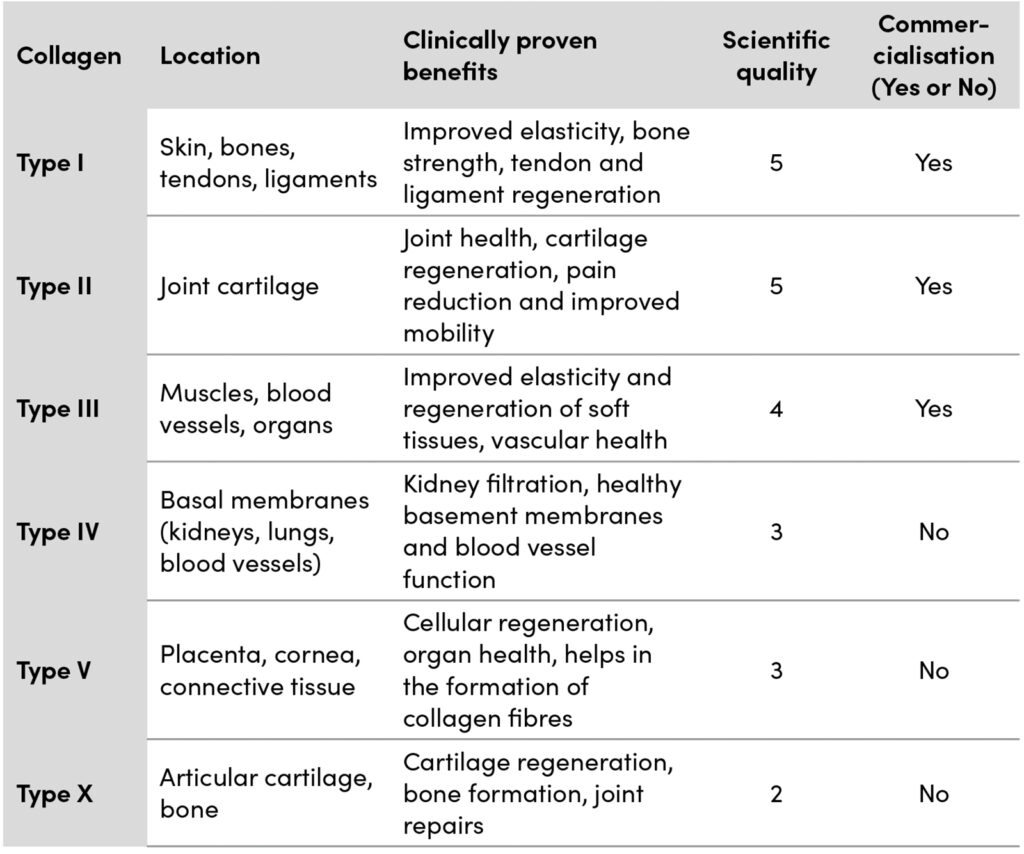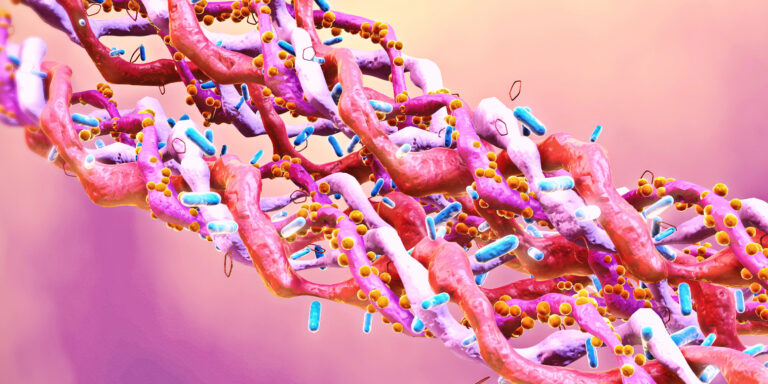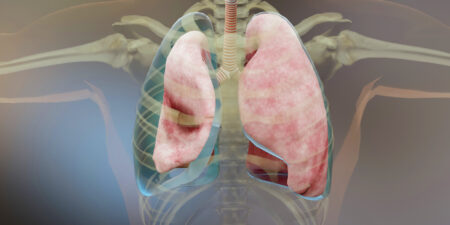The high prevalence of knee osteoarthritis and other joint pathologies of the lower limbs is a growing concern in modern medicine. According to recent studies, it is estimated that up to 43% of asymptomatic adults over 40 years of age show signs of knee osteoarthritis on MRI images(1). This condition not only impacts patients‘ quality of life through limited mobility and the development of comorbidities, but is also associated with increased use of analgesics and non-steroidal anti-inflammatory drugs (NSAIDs), which can lead to long-term adverse effects contributing to a considerable impact on health.
To understand the magnitude of this problem, we must consider our evolution as a species. From Australopithecus to Homo sapiens, through its various intermediate versions such as Homo habilis and Homo erectus, the human locomotor apparatus has undergone a series of adaptations that have perfected our ability to walk on two limbs. Standing on two legs was a key advantage in terms of survival, as it freed the hands for the use of tools, allowed a greater ability to observe the environment to prevent attack by predators and favoured the regulation of body temperature by exposing less skin surface to direct sunlight, advantages that made possible the expansion and domination of the species throughout the planet. However, as anthropologist Daniel Lieberman(2) points out, these evoluti onary advances have come at a significant cost to joint health, especially the joints of the lower limbs. Adopting a bipedal posture is not without its complications, as our hips, knees and ankles, constantly subjected to the forces of gravity, body weight and wear and tear from the motion of frequent walking, were not designed for individuals to live beyond 40 years, probably the life expectancy of early homo sapiens, having now doubled that figure thanks to the advances of civilisation. Lieberman stresses that, although our bone and muscle structure has improved for bipedal locomotion, we are still in a process of adaptation, and this evolutionary lag contributes significantly to the development of joint diseases, such as osteoarthritis, which affect the most heavily loaded joints, especially the knees. Considering that early homo sapiens, with a nomadic lifestyle centred on hunting and gathering, travelled some 175,000 km in their lifetime, this contrasts with the few findings of osteoarthritic signs in specimens from that stage of evolution. In contrast, the average human today does not usually exceed 85,000 km in a lifetime, even though they typically exceed 80 years of age in developed societies. However, longevity, sedentary lifestyles and overweight, among other factors, have led to prevalences of this and other degenerative disorders exceeding 50%, a very significant increase in osteoarthritis in our environment.
The Role of Chondroprotectors in Today’s Medicine
To counteract the effects of joint wear and tear and improve patients‘ quality of life, chondroprotectors such as SYSADOA (synthetic and natural substances for cartilage protection) play a key role in today’s medicine. These products help to reduce pain and inflammation, improving mobility without resorting to painkillers, NSAIDs and opioids. Among the most effective and highly rated chondroprotectants in the field of nutrition and medicine, collagen supplements stand out as a preferred therapeutic option for both clinicians and consumers. However, not all collagens are the same and an in-depth analysis is needed to understand their function and potential health benefits.
The Different Types of Collagen on the Nutraceutical Market
Collagen is an essential protein for the structure of our bones, skin, tendons and cartilage. In the supplement market, there are different types of collagen, each with specific characteristics and health benefits. The most common types are listed below:
Collagen type I
Type I collagen is the most abundant form of collagen in the human body and is essential for the structure of various connective tissues, especially in skin, bones, tendons and ligaments. Composed of densely organised fibres, this collagen offers high tensile strength, enabling it to provide integrity and elasticity to the tissues that make up the structure of the body.
Several clinical studies have validated its efficacy, especially in improving skin elasticity and hydration. A clinical trial published in Skin Pharmacology and Physiology (2014) (3) showed that supplementation with hydrolysed type I collagen significantly increased skin elasticity and hydration in women aged 35-55 years. The results showed that, after 8 weeks of treatment, participants experienced a marked improvement in firmness and wrinkle reduction, results that are confirmed by another study in The Journal of Medical Nutrition & Nutraceuticals (2015) (4) including data on improved skin regeneration, especially when consumed as part of nutritional supplements.
Although there is literature supporting the use of type I collagen for the improvement of osteoarticular health and recovery of tendon and ligament injuries, these findings are not as significant, showing less potency than studies with other types of collagen, such as type II collagen.
Collagen Type II
Type II collagen is the main structural protein in articular cartilage, constituting approximately 90% of the collagen present in this structure. Its primary function is to provide the elasticity and strength necessary to maintain the integrity of cartilage, allowing for proper joint mobility and functional performance. As we age, or due to factors such as injury or degenerative diseases, the body’s ability to synthesise type II collagen decreases, leading to wear and tear and degeneration of articular cartilage. This phenomenon is mainly associated with pathologies such as osteoarthritis, where type II collagen is affected in the joint, causing pain, stiffness and loss of mobility.
The Success of Type II Collagen in the Global Marketplace
Collagen type II enjoys great popularity among professionals and consumers and has experienced significant growth in the supplementation sector. In 2021, the global collagen supplement market reached a value of approximately $4.1 billion, and is expected to grow at a compound annual growth rate (CAGR) of 8.4% through 2030, driven largely by type II collagen, especially in the form of supplements targeting joint health (5). This success is due to its efficacy in treating joint problems, backed by scientific studies showing its ability to improve flexibility and reduce joint pain. However, despite its popularity, conventional type II collagen has certain drawbacks.
Challenges of Conventional Collagen Type II
One of the main challenges with conventional type II collagen is the large amount needed to obtain significant therapeutic benefits. Type II collagen supplements, usually manufactured in powder form, must be consumed in high doses (2.5 to 15 grams daily) and are effective but impractical. In addition, these products are often marketed with astringent textures and flavours that are not always well received, resulting in uncomfortable modes of use for consumers that affect adherence to treatment and, therefore, long-term maintenance.
Undenatured Type II Collagen: The Breakthrough Revolutionising Joint Health
Fortunately, the development of non-denatured type II collagens has solved some of these problems, offering a more potent and practical alternative. Non-denatured type II collagen, such as UC-II®, keeps its triple helix structure intact, allowing it to retain its active epitopes. These epitopes are biologically active regions that interact with the immune system, promoting a process called oral tolerance. This unique immune mechanism regulates the body’s immune response, helping to regenerate joint cartilage and reduce inflammation without the side effects that can occur with other treatments. Oral tolerance also allows benefits to be achieved at much lower doses than those required for conventional hydrolysed type II collagen.
Clinical Studies Supporting UC-II® Efficacy
Several clinical studies have shown that undenatured type II collagen is significantly more effective in improving joint flexibility and cartilage regeneration than conventional versions of type II collagen. In a study published in The Journal of Clinical Trials (2013) (6), UC-II® was found to improve joint flexibility and reduce knee pain at a dose of only 40 mg daily, 15 times more effective than placebo. These findings are reinforced by another publication in the BMC Nutrition Journal (7), which found very significant symptomatic improvement in patients with knee osteoarthritis at the same dose of 40 mg. This contrasts with conventional type II collagen supplements, which require much higher doses to achieve similar results. In addition, UC-II® has proven to be more versatile in formulation, allowing it to be easily integrated into capsules and other easy-to-consume formats, which improves patients‘ adherence to treatment and long-term maintenance, a determining factor in the course of chronic degenerative pathologies.
Undenatured type II collagen represents a significant advance in the collagen category due to a unique mechanism of action, improved effectiveness at lower doses, as well as versatility and greater ability to be combined with other nutraceutical ingredients and presented in other more popular formats with better therapeutic adherence, such as capsules. Ongoing clinical research into this new type of collagen places it at the forefront of joint health, standing out among all collagens and the best natural ingredients in the segment.
Collagen Type III
Type III collagen is one of the most important components of connective tissue, present mainly in muscles, blood vessels and organs. It is often found in combination with type I collagen in elastic and structural tissues, and plays a key role in soft tissue repair and regeneration. This type of collagen is particularly relevant in improving tissue elasticity and strength, and is crucial in the response to injury.
Regarding the clinical benefits of type III collagen, a study published in The Journal of Clinical Investigation (2015) (8) showed that supplementation with type III collagen, in combination with type I collagen, contributes to improved function and regeneration of tendons and ligaments. The results indicated an improvement in soft tissue recovery and an increase in muscle and tendon flexibility and endurance in patients who had suffered sports injuries or joint wear and tear. This study supported the idea that type III collagen is essential for maintaining the integrity of connective tissues and speeding recovery after injury.
Another study in The Journal of Clinical Investigation (2018) (9) assessed the effects of type III collagen on vascular health, showing that its presence is essential for maintaining the elasticity of arteries.
These findings highlight the impact of type III collagen on the overall health of connective tissues, including blood vessels, and evidence of a more modest role in joint health compared to the effectiveness of other types of collagen, such as type II, demonstrated in a wider scientific literature.
Collagen type IV
Type IV collagen is a specialised form of collagen found predominantly in the basement membranes of cells, which are key structures that support and line many tissues and organs in the body, such as the kidneys, lungs and blood vessels. Unlike other types of collagen found in more structural tissues such as skin and bone, type IV collagen plays a critical role in the formation of cell membranes, which are essential for organ integrity and function.
A major study published in The Journal of Biological Chemistry (10) highlighted the function of type IV collagen in the basement membranes of the kidneys, underlining its role in glomerular filtration and the prevention of kidney disease. The research showed that disruption or loss of type IV collagen in basement membranes was associated with increased susceptibility to kidney disorders, such as nephropathy. Although the study focused primarily on cell biology and renal pathology, the results suggest that type IV collagen is essential for organ function and the stability of endothelial cells lining blood vessels, underscoring its importance for overall health.
Despite its biological importance, type IV collagen is not commonly used in the nutraceutical sector or in supplement formulation for several reasons. Firstly, type IV collagen is found in very small amounts in the body, and its specific role is more focused on cell structure than on the regeneration of visible tissues or large structures of the body, such as cartilage or bones. This makes its applicability in oral supplements less direct compared to other types of collagen such as type I or II, which have a more tangible impact on skin and joint health. In addition, large-scale production of type IV collagen in a format suitable for supplementation is technically more challenging and less cost-effective.
Collagen Type V.
Type V collagen is a key component in tissues such as the placenta, cornea and certain connective tissues. It is found in combination with type I collagen in structures such as tendons and in the extracellular matrix of various organs. This type of collagen plays an important role in the formation of collagen fibres and in the organisation of extracellular matrices.
A study published in the Journal of Biological Chemistry in 2004 (11) describes how type V collagen is involved in the regulation of type I collagen fibrillation, which is essential for tissue integrity, findings that are complemented by the excellent handbook Biochemistry of Collagen, Laminins and Elastin (2019) by Leeming and Karsdal (12). However, because type V collagen has a structural and not a direct regenerative function in accessible tissues such as joints, it is not marketed in nutraceutical supplements. Its use is mainly limited to cellular research and tissue-specific studies, and its production in practical forms for supplementation is limited.
Collagen Type X
Type X collagen is mainly found in cartilage and is crucial in cartilage mineralisation during bone formation. It is especially relevant in the development of cartilage in joints and in bone regeneration processes.
A study published in Osteoarthritis and Cartilage (2010) (13) highlighted the role of type X collagen in subchondral cartilage formation and its involvement in osteogenesis. Supplementation with type X collagen has shown some benefits in improving joint health and cartilage regeneration in patients with osteoarthritis.
Although type X collagen has valuable applications in bone and cartilage regeneration, especially in the improvement of subchondral cartilage and osteogenesis, its success in the dietary supplement market is considerably less than that of type II collagen, especially its undenatured versions. The extensive scientific bibliography on type II collagen shows conclusive results of effectiveness in favour of improving joint flexibility and cartilage regeneration in pathologies such as osteoarthritis, demonstrating a much longer scientific career than that of type X collagen, currently relegated to very specific applications and without having demonstrated clear advantages.

In summary, the different types of collagen play essential roles in the health and functionality of our connective tissues, each specialising in key areas of the body. While type I collagen has been primarily focused on dermo-cosmetic and nutricosmetic use due to its special role in the dermis and more significant clinical results in the dermatological and aesthetic area, type II collagen leads the way in joint health care compared to other types of collagen, backed by long experience of use and market validation over the last decade, and still retains a surprising intention to grow in sales worldwide in the coming years. This commercial success has been accompanied by a great scientific investment that far exceeds the clinical trials carried out with other types of collagens, in addition to the undisputed prominence of non-denatured type II collagens since their inception, whose studies have shown higher rates of effectiveness with much lower doses and providing advantages that have resolved the potential discussions surrounding the predilection of other types of collagens for the prevention and treatment of osteoarticular pathologies. Collagens type III, IV, V and X, although they show well-studied functions within the organism, have fewer publications and little or no commercialisation, still leaving the door open for more specific research due to the potential therapeutic use they could provide in various areas of health.
From anti-ageing to healthy-ageing via mobility, hand in hand with collagen.
Over the past decades, we have moved from fighting ageing per se, focusing on slowing down its visible and physical effects, to a more holistic concept of healthy ageing. Today, the focus is less on stopping ageing and more on how to age in an active, healthy and functional way. In this context, mobility plays a key role. A person who is active not only preserves physical agility, but experiences a number of benefits that positively impact on his or her overall health. Metabolic and weight control, improved vascular risk, reduced sarcopenia and optimised cognitive performance are just some of the key benefits of active ageing. In addition, mental health is strengthened by maintaining independence and the ability to perform daily activities without restrictions. These factors contribute to a longer life, less morbidity and, most importantly, a higher quality of life.
On this path to healthy ageing, ingredients such as collagen play a crucial role. Its ability to improve skin care, as previously discussed for type I collagen, has obvious aesthetic benefits, but the mobility and joint function benefits of type II collagen, especially in its undenatured forms, allow people to remain agile and active for longer, promoting healthier ageing. These advances in the development of collagen as a nutritional supplement not only contribute to the regeneration of joint cartilage, but also help to maintain an active and functional life, which is key to achieving greater levels of health and well-being as we age.
Collagen for 1 million more years
From the first Australopithecus to the present-day human being, almost 4 million years have passed, a period in which evolution has forged a truly exceptional organism, capable of adapting to almost any condition in both natural and urban environments. However, this long evolutionary process, full of astonishing advances, has not been perfect. Despite our body’s extraordinary capabilities, we continue to struggle with weaknesses left behind along the way, one of the most prominent being the fragility of our joints under gravity, body weight and standing. While our species has managed to overcome many adversities, it is likely that we will need at least another million years of evolution to develop joints that are truly resistant to these new challenges, a process during which prominent ingredients such as collagen will be excellent travelling companions that protect our joints to keep us more active, therefore longer-lived and with a higher quality of life.
Advances in science and technology have enabled us to gain in-depth knowledge of the types of collagen and to develop improved versions of this key element in the body. R+D+I currently provides us with molecules that are aimed at more specific targets, with better results and greater usability, further increasing the role of this natural ingredient in the treatment and prevention of problems as relevant as those faced in our day-to-day joint health.
Literature
- Culvenor AG, Øiestad BE, Hart HF, Stefanik JJ, Guermazi A, Crossley KM. Prevalence of knee osteoarthritis features on magnetic resonance imaging in asymptomatic uninjured adults: a systematic review and meta-analysis. Br J Sports Med. 2019 Oct;53(20):1268-1278. doi: 10.1136/bjsports-2018-099257. Epub 2018 Jun 9. PMID: 29886437; PMCID: PMC6837253.
- Wallace IJ, Worthington S, Felson DT, Jurmain RD, Wren KT, Maijanen H, Woods RJ, Lieberman DE. Knee osteoarthritis has doubled in prevalence since the mid-20th century. Proc Natl Acad Sci U S A. 2017 Aug 29;114(35):9332-9336. doi: 10.1073/pnas.1703856114. Epub 2017 Aug 14. PMID: 28808025; PMCID: PMC5584421.
- Bolke L, Schlippe G, Gerß J, Voss W. A Collagen Supplement Improves Skin Hydration, Elasticity, Roughness, and Density: Results of a Randomized, Placebo-Controlled, Blind Study. Nutrients. 2019 Oct 17;11(10):2494. doi: 10.3390/nu11102494. PMID: 31627309; PMCID: PMC6835901.
- Pu SY, Huang YL, Pu CM, Kang YN, Hoang KD, Chen KH, Chen C. Effects of Oral Collagen for Skin Anti-Aging: A Systematic Review and Meta-Analysis. Nutrients. 2023 Apr 26;15(9):2080. doi: 10.3390/nu15092080. PMID: 37432180; PMCID: PMC10180699.
- Globaler Kollagen-Marktbericht, 2021.
- Knaub, et al. (2022). UC-II® nicht denaturiertes Typ-II-Kollagen reduziert Kniegelenksbeschwerden und verbessert die Mobilität bei gesunden Probanden: eine randomisierte, doppelblinde, placebokontrollierte klinische Studie. J Clin Trials, 12(1):1000492.
- Lugo, et al. (2016). Wirksamkeit und Verträglichkeit eines nicht denaturierten Typ-II-Kollagens bei der Modulation von Knie-Arthrose-Symptomen: eine multizentrische randomisierte, doppelblinde, placebokontrollierte Studie. Nutr J, 15(14).
- Yang G, Rothrauff BB, Tuan RS. Regeneration und Reparatur von Sehnen und Bändern: klinische Relevanz und Entwicklungsparadigma. Birth Defects Res C Embryo Today. 2013 Sep;99(3):203-222. doi: 10.1002/bdrc.21041. PMID: 24078497; PMCID: PMC4041869.
- D’hondt S, Guillemyn B, Syx D, Symoens S, De Rycke R, Vanhoutte L, Toussaint W, Lambrecht BN, De Paepe A, Keene DR, Ishikawa Y, Bächinger HP, Janssens S, Bertrand MJM, Malfait F. Type III collagen affects dermal and vascular collagen fibrillogenesis and tissue integrity in a mutant Col3a1 transgenic mouse model. Matrix Biol. 2018 Sep;70:72-83. doi: 10.1016/j.matbio.2018.03.008. Epub 2018 Mar 15. PMID: 29551664.
- Boutaud A, Borza DB, Bondar O, Gunwar S, Netzer KO, Singh N, Ninomiya Y, Sado Y, Noelken ME, Hudson BG. Typ IV Kollagen der glomerulären Basalmembran. Beweise dafür, dass die Kettenspezifität des Netzwerkaufbaus durch die nicht-kollagenen NC1-Domänen kodiert wird. J Biol Chem. 2000 Sep 29;275(39):30716-24. doi: 10.1074/jbc.M004569200. PMID: 10896941.
- Wenstrup RJ, Florer JB, Brunskill EW, Bell SM, Chervoneva I, Birk DE. Typ-V-Kollagen steuert die Initiierung des Aufbaus von Kollagenfibrillen. J Biol Chem. 2004 Dec 17;279(51):53331-7. doi: 10.1074/jbc.M409622200. Epub 2004 Sep 21. PMID: 15383546.
- Müller, C., & Lutz, A. (2019). Biochemie von Kollagen, Laminin und Elastin. Chapter 5: Collagen Type V. In Advances in Clinical Chemistry (pp. 123-145). Elsevier. https://doi.org/10.1016/B978-0-12-817068-7.00005-7
- Bagi, C. M., & Gaskill, T. (2010). Kollagen Typ X in der Knorpel- und Knochenbildung: Implikationen für regenerative Behandlungen. Osteoarthritis and Cartilage, 18(4), 1015-1022. https://doi.org/10.1016/j.joca.2009.12.021.
- McAlindon, T. et al. (2018). Die Wirkung von Kollagen-Supplementierung auf die Knochengesundheit bei postmenopausalen Frauen: Eine randomisierte kontrollierte Studie. Osteoporosis International.
- Zdzieblik, D. et al. (2015). Wirkung einer Kollagenpeptid-Supplementierung auf die Erholung nach trainingsinduzierten Muskelschäden: Eine randomisierte kontrollierte Studie. The American Journal of Clinical Nutrition.
Autoren
is Specialist in Family and Community Medicine, Spain, and Nutraceuticals Expert. He is an independent consultant in R&D, marketing and scientific communication.




